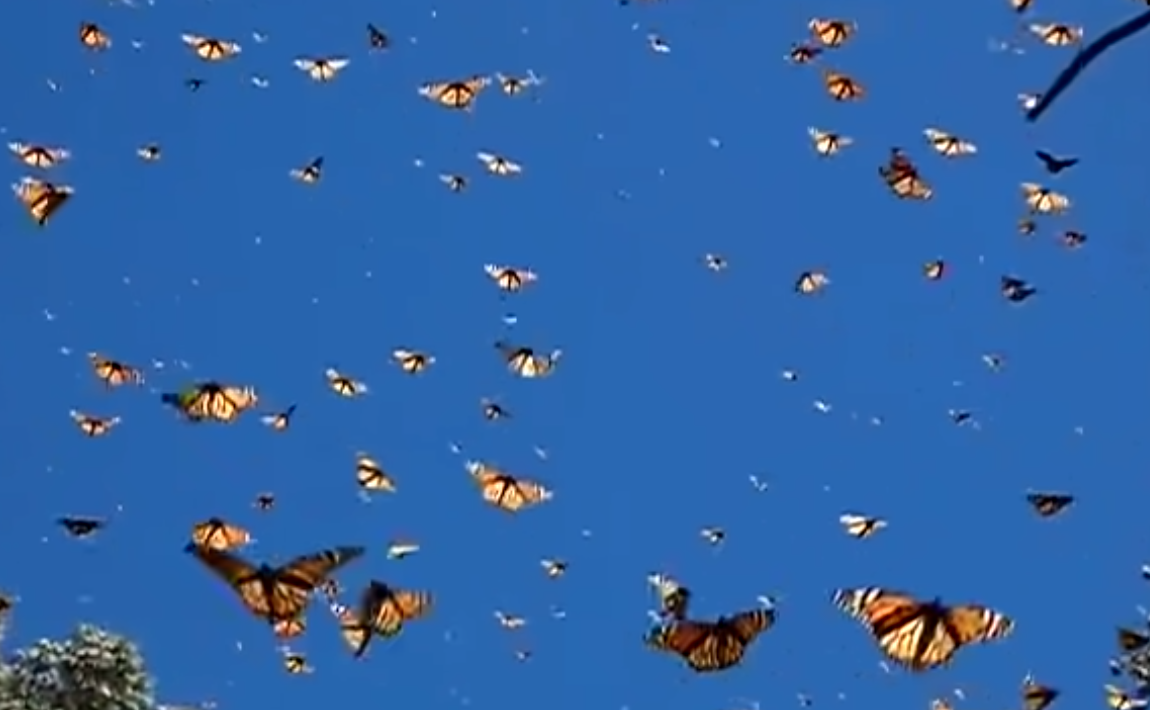Teach This Poem, though developed with a classroom in mind, can be easily adapted for remote-learning, hybrid-learning models, or in-person classes. Please see our suggestions for how to adapt this lesson for remote or blended learning. We have also noted suggestions when applicable and will continue to add to these suggestions online.

Watch this video of butterflies flying.
The following activities and questions are designed to help your students use their noticing skills to move through the poem and develop their thinking about its meaning with confidence, using what they’ve noticed as evidence for their interpretations. Read more about the framework upon which these activities are based.
- Warm-up: Watch this video of butterflies flying. As you watch, what are you thinking and feeling? Why? What do you notice or wonder about the butterflies?
- Before Reading the Poem: (think-pair-share) Join with a partner or small group and discuss what you think about the title “the poem is a dream telling you its time”? What might this mean? Why?
- Reading the Poem: Silently read the poem “the poem is a dream telling you its time” by Marwa Helal. What do you notice about the poem? Note any words or phrases that stand out to you or any questions you might have.
- Listening to the Poem (enlist two volunteers to read the poem aloud): Listen as the poem is read aloud twice, and write down any additional words and phrases that stand out to you. Or, you can opt to listen to the poet read the poem.
- Small-group Discussion: Share what you noticed about the poem with a small group of students. Based on the details you just shared with your small group and the resources from the beginning of class, what do you think of the title “the poem is a dream telling you its time” now? What do you notice about the way the poem looks on the page? How might it relate to the video about butterflies that you viewed earlier? How would it read differently if the poem was all left justified or in prose format? How might the structure of the poem help you think about its meaning?
- Whole-class Discussion: How might you describe the speaker in this poem? Why? What do you think of these lines “and i / am still / adjusting to time / the distance and its permanence / i have found my shortcuts / and landmarks / to place”? What are your personal shortcuts and landmarks? These can be real or personal to you.
- Extension for Grades 7-8: During the class discussion, you shared about places or landmarks that are important to you. Choose to write a poem about a landmark, real, imaginary, or personal, or write a poem inspired by Helal’s poem.
- Extension for Grades 9-12: Read the “About this Poem” section. Work with a partner or small group and cut up the words or lines of this poem. Work together to rearrange the poem into a new order. Share your poem and experience with the class. How did this “practice of poem making [result] in its own new form” or how did it not? What can we learn from this poem and this experience about poems and/or language?
To celebrate Arab American Heritage Month in April—and the rich tradition of Arabic poetry all year long—browse this selection of kid-friendly poems by classic and contemporary poets. Or, use this search tool to find more poems about dreams.
Free verse: poetry not dictated by an established form or meter and often influenced by the rhythms of speech. Read more.
